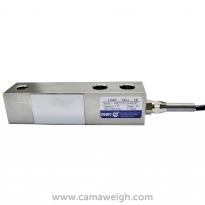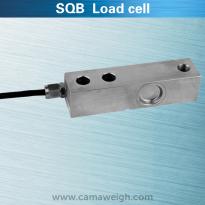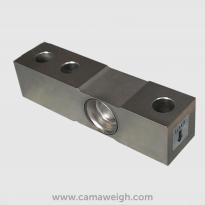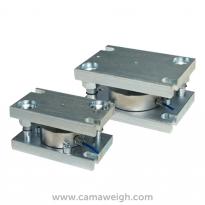Load Cells
Load Cells
Camaweigh Load Cells
What are Load Cells?
Load cells are the heart and soul of any digital weighing equipment. These weighing accessories are responsible for reading the weights of loads. Load cells are types of force transducers which convert the force pressure applied by loads into electrical signals. These converted electrical signals are then sent to either an isolated scale indicator or a built-in indicator on the weighing equipment. Load cells are only applicable with digital weighing equipment since analogue scales used different mechanisms. Analogue weighing equipment typically make use of compressed spring which expands whenever a pressure force in acted upon it. Load cells are the best option to use because of its accuracy and great load capacities. Load cells have load capacities which can reach up to 50 tons or more, while analogue weighing equipment have significant lower capacities. Another advantage load cells have is that, compared to the spring system, they are more durable since they are made from alloy steel. Spring systems of analogue weighing equipment have a tendency to permanently deform when it exceeds its load capacity.
Types of Load Cells
Different types of load cells are calibrated and made specifically for different recommended applications. Camaweigh offers both single shear and double shear load cells. Single shear load cells are built and designed for low profile processes and weighing scales. A support plate based on the data sheet of a single shear load cell is recommended to be used to get accurate readings. Exceeding the dimensions of the support plate dimensions will have great effects on the readings. This type of load cell has capacities ranging from 100kg to 50t. Single shear or shear beam load cells are recommended to be bolted on flat smooth surfaces. Double shear load cells, on the other hand, are mostly used to measure compression forces. The center of force concentration for this kind of load cell is on the middle. The spring body is the most important part of a load cell. The metal part of this spring body undergoes deformation upon application of load and goes back to normal form when the load is removed. Double shear load cells consist of two spring bodies while single shear load cells only have one. It is mostly found in high capacity weighing scales. Silo scales, weighing frames, truck scales, and container scales all use double shear load cells.
Classification of Load Cells
Load cells are also classified based on their shape. Beam type load cells have a straight beam shape, while a washer type load cell has a circular shape resembling a washer. Other shapes include can-type and S-type load cells. Some weighing equipment makes use of more than one load cell. With this case, junction boxes or summing boxes are used in order to get the total load reading of all the load cells. Equipment like weighbridges and axle weigh scales have multiple load cells which are all connected to a junction box and then the summed load weight is transmitted to a scale indicator.
Certifications
Camaweigh load cells have either IP67 or IP68 protection classification rating. This classification rating means the load cells are protected against dust and can withstand being submerged in water to a certain depth. It is very important to select the correct load cell for an application. This can be achieved by following the standard specifications on the data sheet. These parameters include the load cell’s maximum capacity, maximum safe overload capacity, ultimate overload capacity, nominal load, and many more. These parameters are very important, not only to the secure an accurate reading, but to also ensure safety of the equipment. Camaweigh only offers the best quality load cells in the market and guarantees great weighing accuracy and reliability.


 French
French Spanish
Spanish


